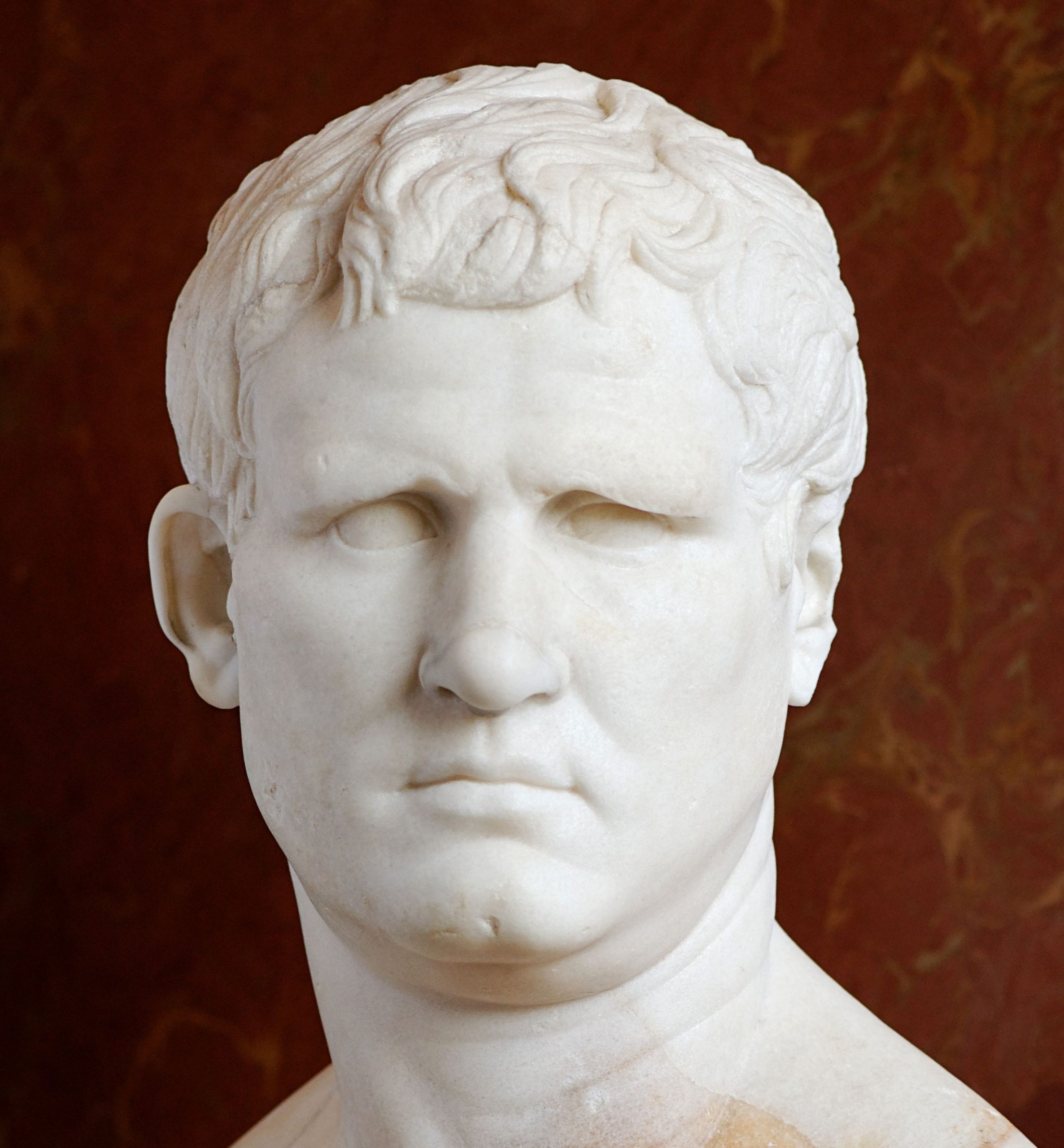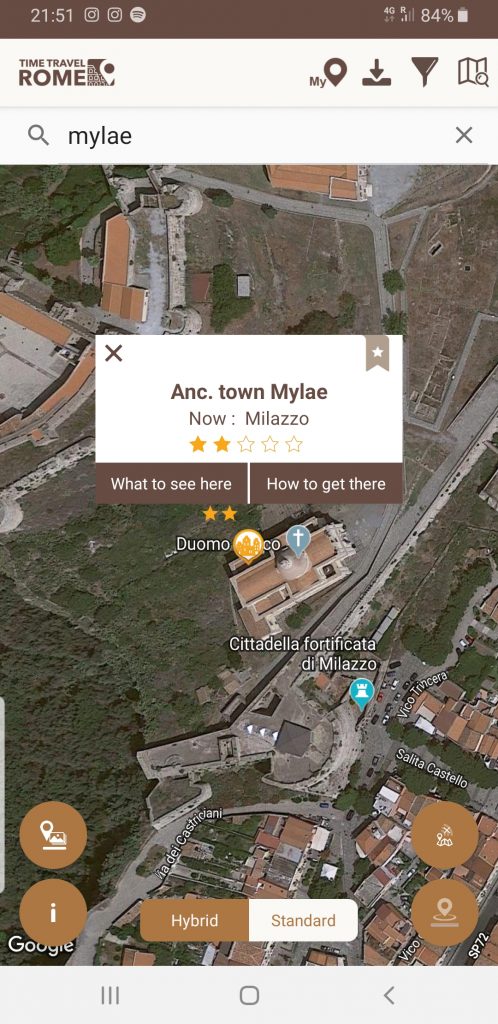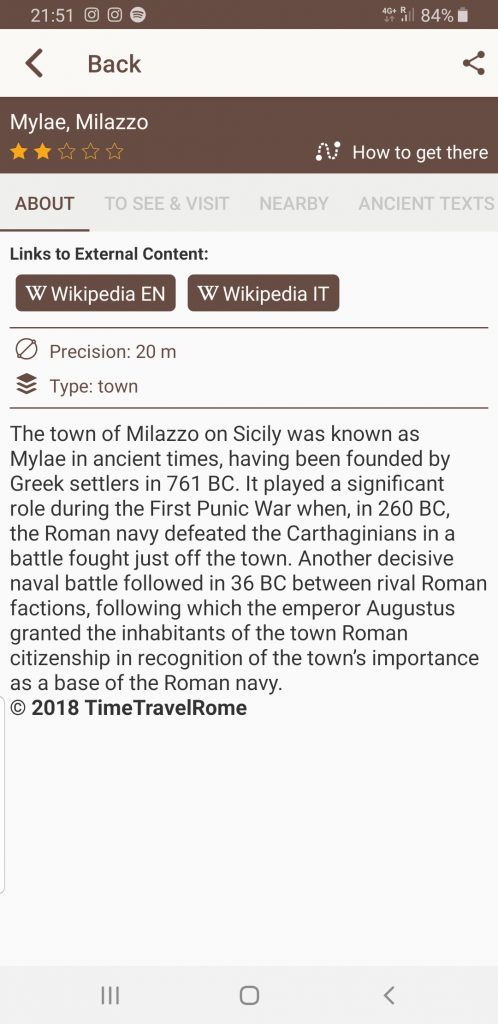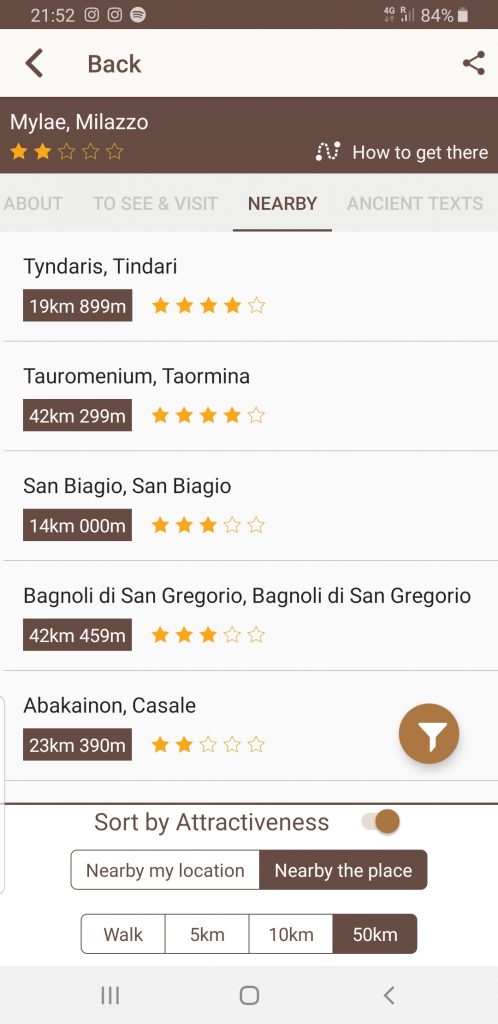Despite Julius Caesar’s complete defeat of Pompey the Great, Pompey’s children continued to fight in his name even after Caesar’s murder. The most successful was Sextus Pompey, who collected an armada of pirate ships and continually harassed Roman shipping. In 37 B.C., young Octavian suffered a shameful defeat against Sextus Pompey, and once again turned to his old friend, Marcus Agrippa, for help. Fresh from a successful military governship in Gaul, Agrippa returned to Rome and proved his prowess as an admiral as well, leading the Roman navy to a glorious victory at Mylae, an old Italian town with origins as far back as the Neolithic era.
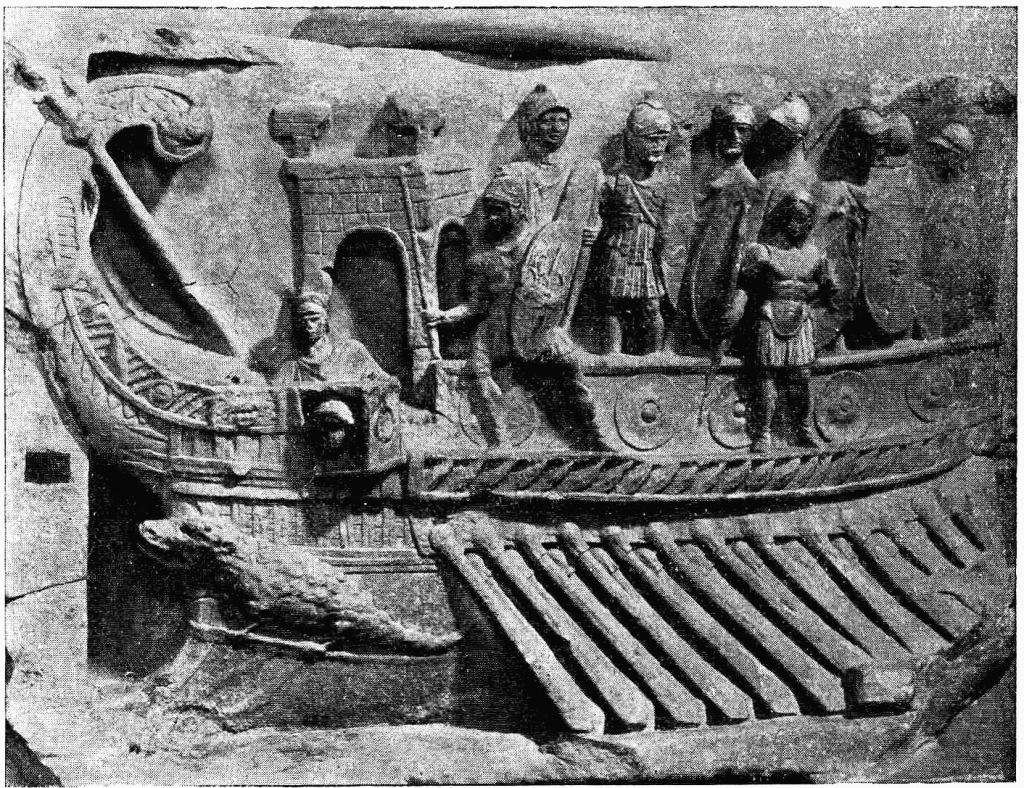
Governor of Gaul
Soon after Agrippa retook Sipontum, Octavian and Antony settled an uneasy truce. As ruler of the western half of Rome, Octavian needed support from strong and capable subordinates. About a year after the treaty, he appointed Agrippa as governor of Transalpine Gaul, trusting his best friend and his best general to control the uprisings on the fractious borders of the Republic. His trust was not misplaced, for Agrippa put down the rebellious Aquitanian Gauls and then moved against the Germanic tribes. He became the second Roman general to cross the Rhine, preceded only by Julius Caesar himself.
While Agrippa had been enjoying stunning success in Gaul, Octavian was struggling. As he sailed south with a large fleet to meet his reinforcements, Sextus Pompey popped out of the port of Messana and fell on the Roman ships. Octavian ordered his ships to merely defend themselves, but after his own flagship was sunk and he was beached, his commanders turned to fight, fearing to die without even giving battle. They fared poorly and many of Octavian’s ships were lost before night finally brought an end to the battle.
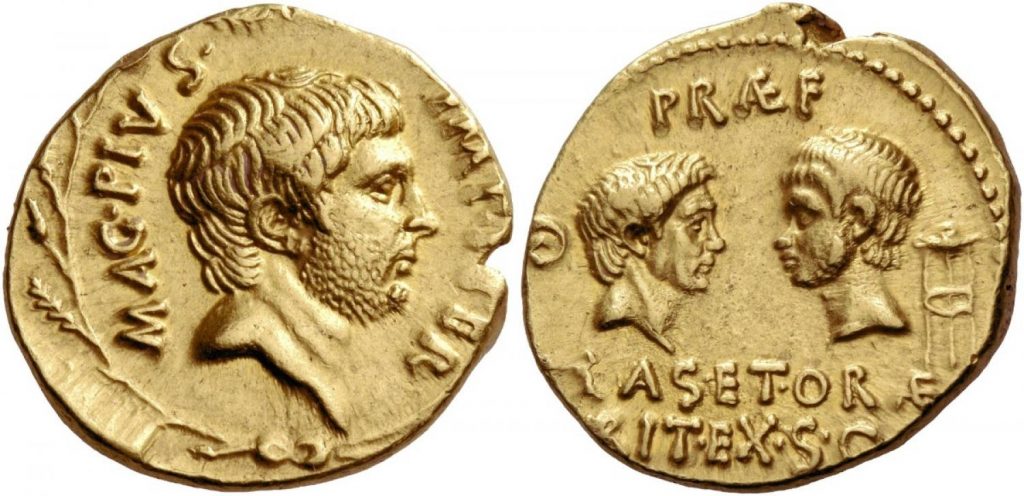
However, even that was no reprieve, for a violent storm came up and dashed many of the ships to pieces on the shore. “Groans were heard throughout the entire night, and the cries of men running along the shore and calling their friends and relatives upon the sea by name, and mourning for them as lost when they could hear no responses; and anon the cries of others lifting their heads above the waves and beseeching aid from those on shore. Nothing could be done on either land or water.” Octavian lost over half of his men and ships.
Admiral of the Fleet
In desperate need of a military mind, Octavian recalled Agrippa from Gaul and appointed him consul for 37 B.C., even though Agrippa was still several years to young according to Roman law. He wanted to honor his friend with a Triumph, but Agrippa “would not celebrate the triumph, considering it disgraceful for him to make a display when Caesar had fared so poorly.” Agrippa dedicated himself to refitting the fleet with great enthusiasm. Realizing that Octavian’s forces were at a severe disadvantage as they did not have a safe port to weather in, his first order of business was to create one. In a brilliant move, he cut through the land that separated the Lucrine Lake from the sea near Baiae, creating both an outer harbor and an access point to the inland Lake Avernus. He named his new harbor Portus Julius in honor of Julius Caesar.
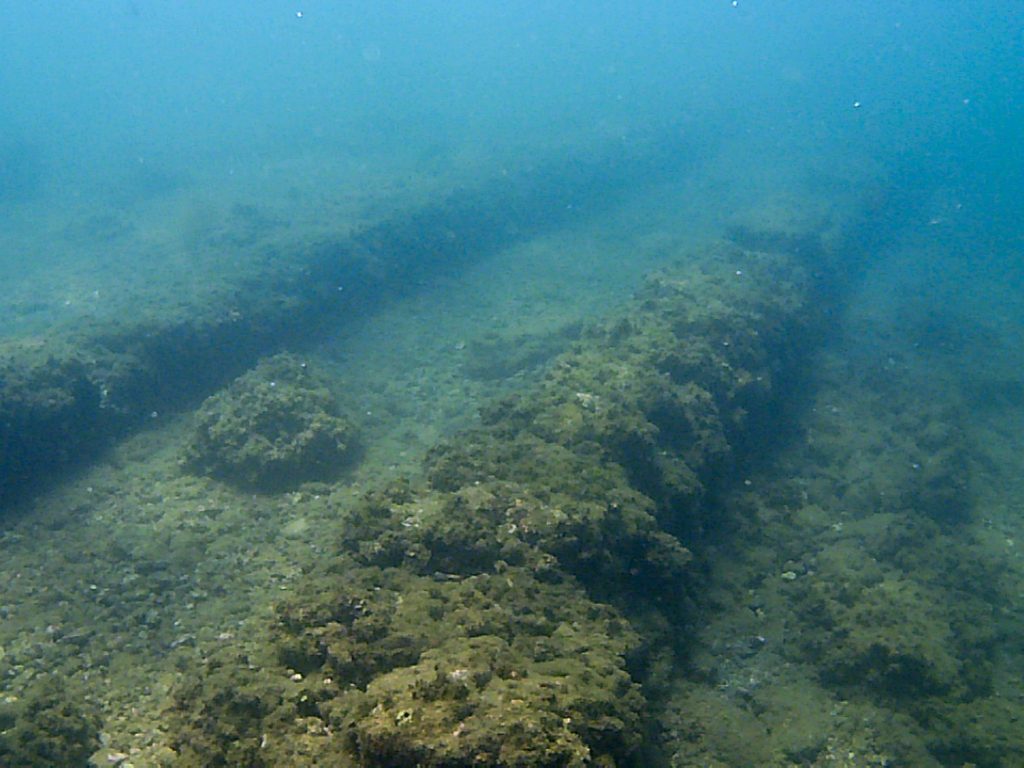
Within this new port, Agrippa oversaw the refitting of the damaged ships, the building of new ones, the training of new rowers and crews, and a number of new technological advancements in naval warfare. He helped design larger ships, created a new and improved grappling hook, and used the access to Lake Avernus to practice simulated naval warfare and further increase the abilities of his new sailors. One of his most innovative designs was called a Harpax. It was a catapult system that would hurl a piece of wood with an iron claw onto the enemy ship, after which the machine could winch the ship alongside for boarding. When the fleet emerged from the Portus Julius, it was a far superior force to the one that had been so humiliated in defeat a year earlier.
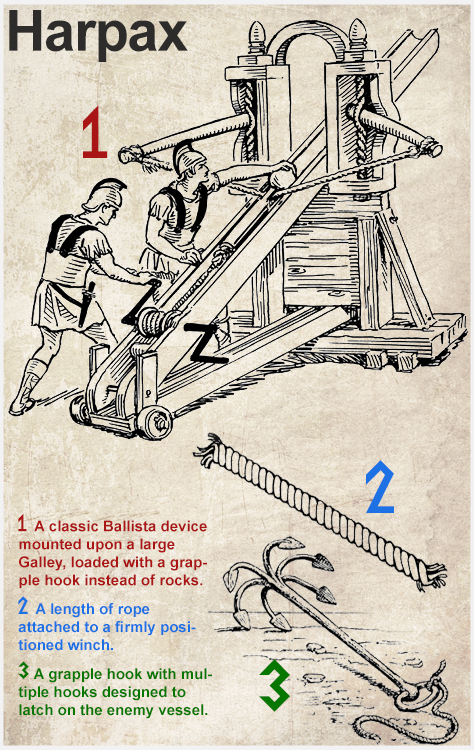
Victory at Mylae and Naulochus
In 36 B.C. Agrippa and Octavian took their new fleet to the open sea in search of Sextus Pompey. Agrippa encountered him just off the coast of Mylae. “They rushed against each other, the shouts of the men and the spray from the ships adding terror to the scene. The Pompeian ships were shorter and lighter, and better adapted to blockading and darting about. Those of Octavian were larger and heavier, and, consequently, slower, yet stronger to give blows and not so easily damaged….When they came to close quarters, being higher, [the Octavian ships] could hurl missiles down upon the enemy, and more easily throw the “ravens”and the grappling-irons.” Agrippa gave no quarter, and relentlessly pursued the Pompeian ships. His own commanders had to stop him from following them all the way onto the rocky shore and causing damage to his own ships.
After this decisive victory, Agrippa next came upon Sextus Pompey near Naulochus. In this second great battle, the fleets were evenly matched. Both forces consisted of about three hundred ships. Yet Agrippa fought brilliantly, blocking in Sextus Pompey’s more maneuverable ships with his heavier ones and using his new harpax system to great success. Only seventeen of Sextus Pompey’s ships escaped. One of these carried Sextus himself, who fled to the east. However, he was killed by Mark Antony a year later. Octavian honored Agrippa by presenting him with a golden crown decorated with miniature replicas of the prows of the enemy ships, “a decoration given to nobody before or since.”
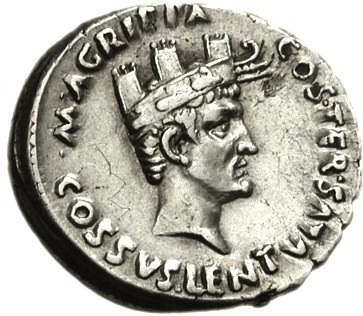
What to See in Mylae now ?
Archaeological evidence of the town’s ancient history includes traces of its walls and of buildings going back to prehistoric times. The town’s castle was lies upon an earlier fortress dating back to the Roman period. An archaeological museum in the town preserves and displays artifacts from the area.
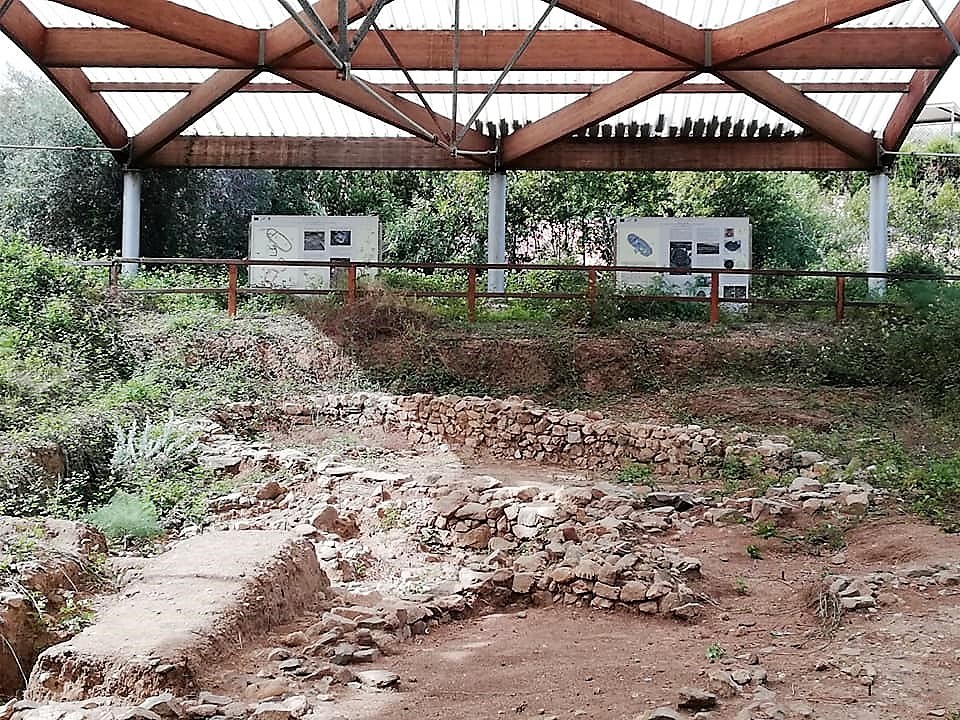
Mylae on Timetravelrome App:
Sources: Cassius Dio, Roman History; Appian, Civil Wars; Suetonius, Life of Augustus; Eutropius, Abridgement of Roman History; Florus, Epitome of Roman History.
Author: Written for Timetravelrome by Marian Vermeulen
Header image: Portrait of M. Vipsanius Agrippa of the Gabii type. Marble, ca. 25–24 BC. Now in Louvres. Photo by Jastrow. Licensed under CC BY 2.5
